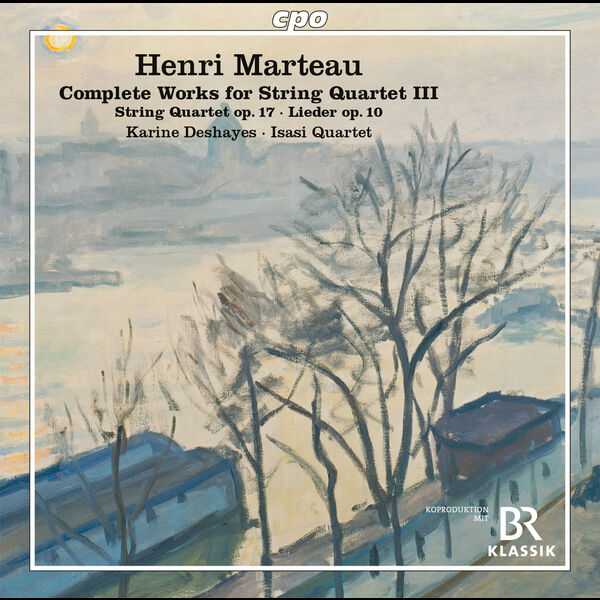
Composer: Henri Marteau
Performer: Karine Deshayes, Isasi Quartet
Format: FLAC (tracks)
Label: CPO
Catalogue: 555130-2
Release: 2022
Size: 326 MB
Recovery: +3%
Scan: yes
String Quartet No. 3 in C Major, Op. 17
01. I. Comodo
02. II. Hymne an den Schmerz. Molto adagio
03. III. Scherzo. Allegro
04. IV. Finale. Adagio – Allegro
8 Lieder, Op. 10
05. No. 1, An Agnes
06. No. 2, Thranentropfen
07. No. 3, Als die Liebe kam
08. No. 4, In den Garten meiner Seele
09. No. 5, Liebeslied
10. No. 6, Sonnenlied
11. No. 7, Träume
12. No. 8, Herbst
In contrast to his first two quartets, the third quartet, which Marteau composed towards the end of the First World War, is of a completely different nature and presents itself as a strongly biographical work, to which Marteau wrote in 1918: “My new String Quartet No. 3 was composed under the impression of the terrible events of which my wife was the innocent victim. There are sections of life, parts of the soul, which express themselves in this piece. The Scherzo is a Viennese mood piece, memories of the city in which we felt so comfortable and happy”. But he also processed in this largely melancholy quartet that he was no longer in demand or wanted as a violinist.
The present programme is supplemented with the Acht Lieder mit Begleitung von Streichquartett, Op. 10 speak, written in 1905. In these songs Marteau is far ahead of his time, because it is the first string quartet of its kind in which the human voice also has its say. Until then, the string quartet was considered the royal genre of pure, abstract and absolute music. Marteau is the first composer to establish completely new connections between the strings and the voice, which is very fascinating and has not yet been properly appreciated by music history.